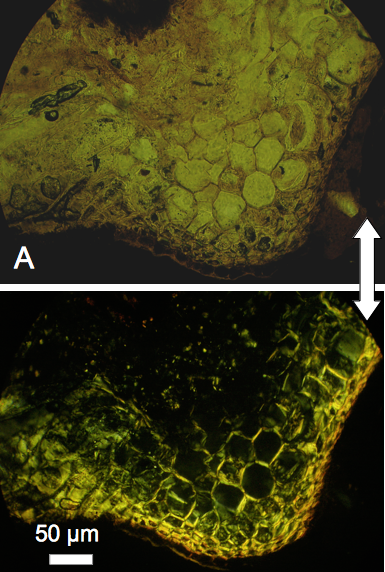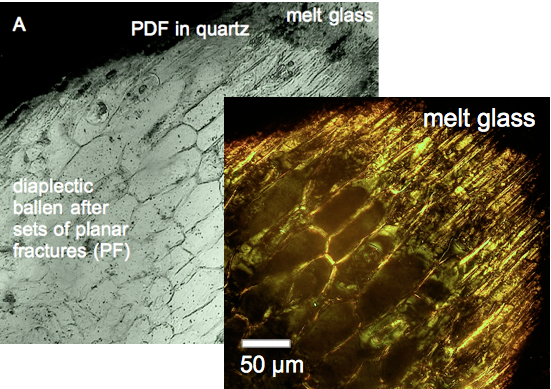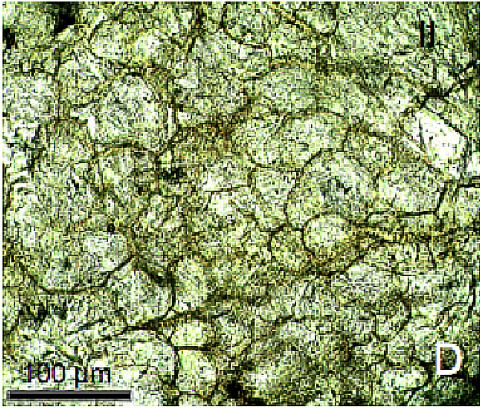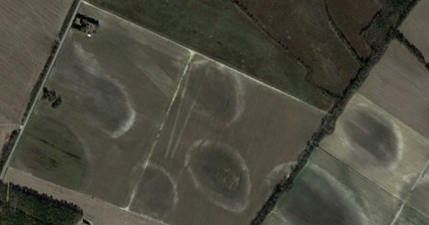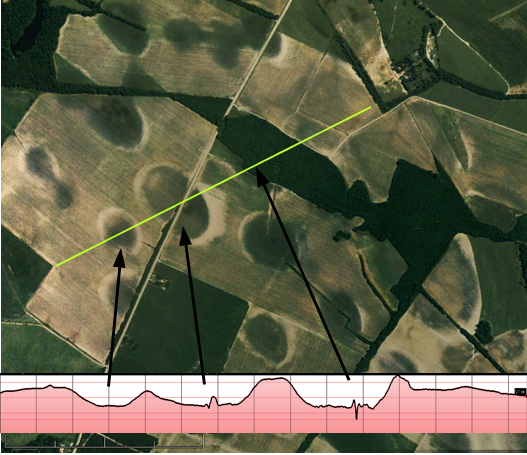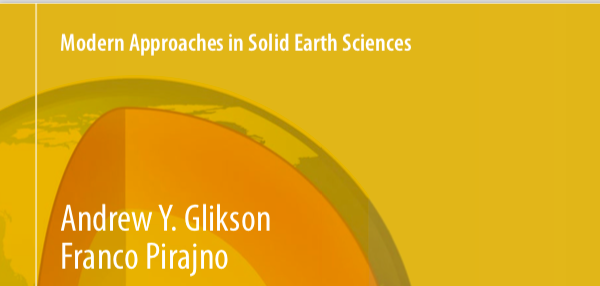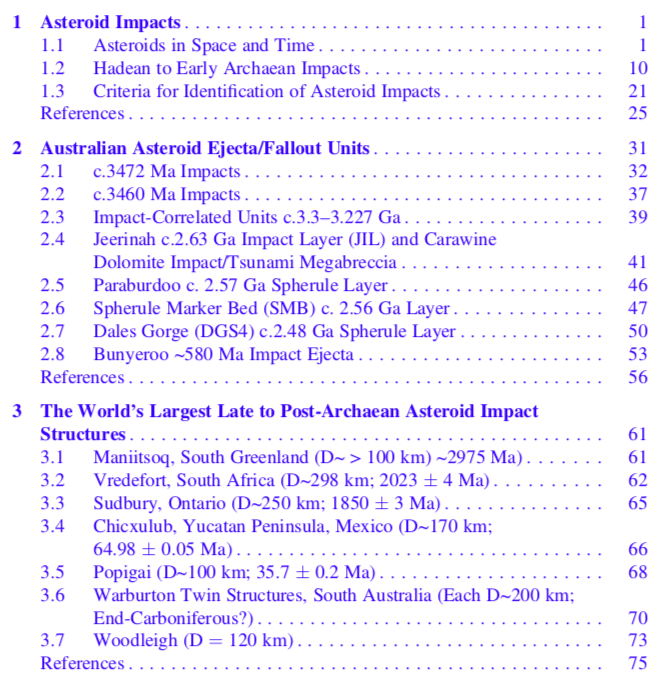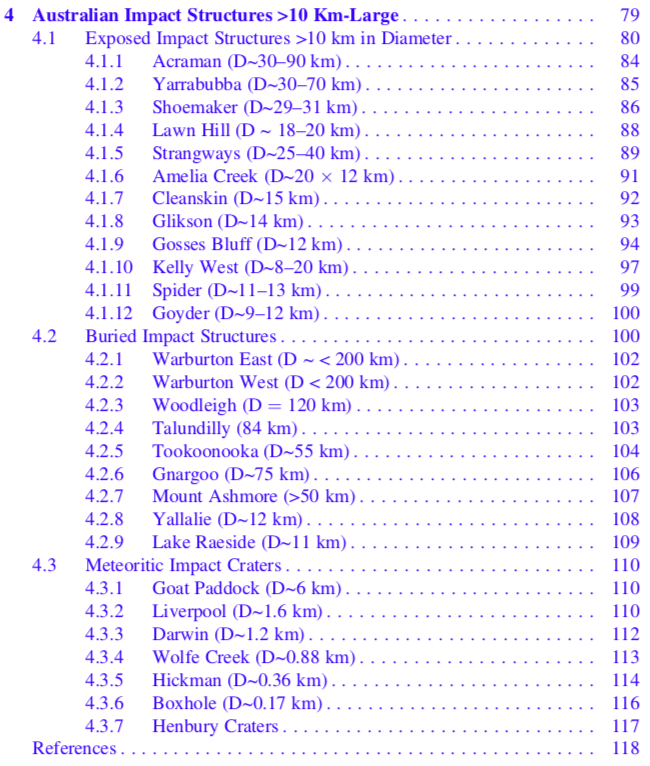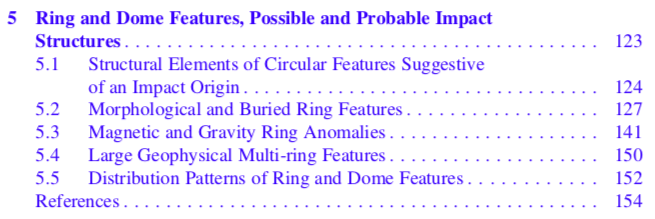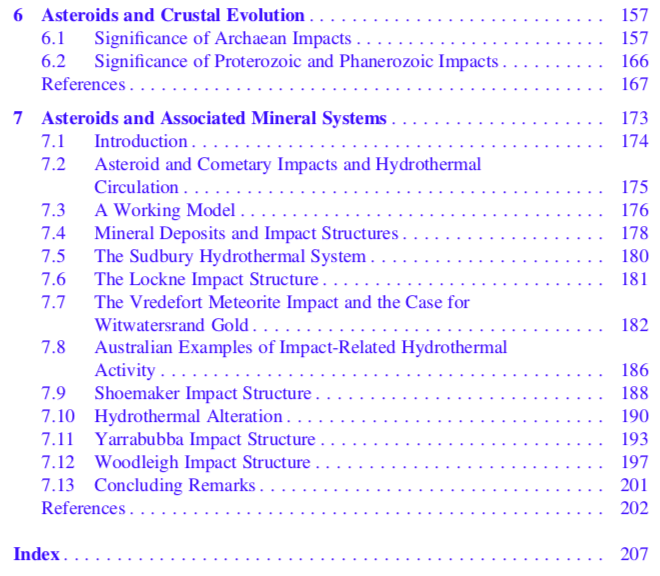Ground Penetrating Radar (GPR): Emmerting #004 crater, Chiemgau meteorite impact strewn field (Bavaria, Southeast Germany)
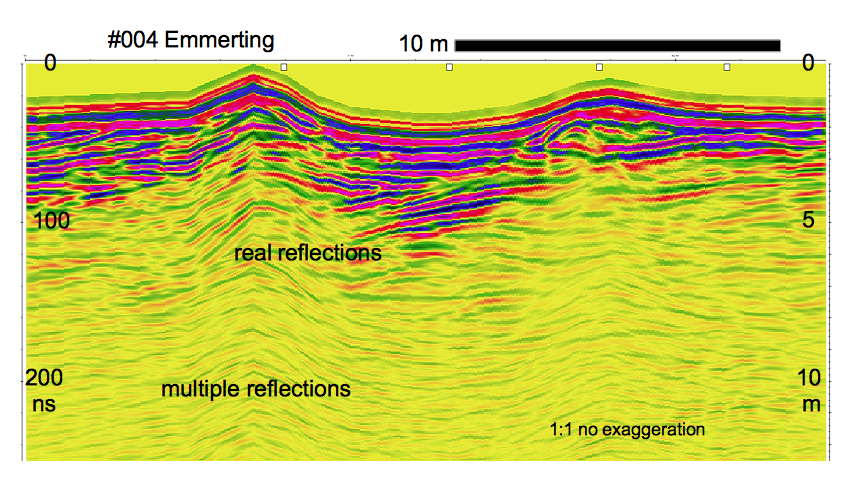 Ground Penetrating Radar (GPR) – meteorite crater Chiemgau impact
Ground Penetrating Radar (GPR) – meteorite crater Chiemgau impact
Diametral radargram across one of the most spectacular craters in the Chiemgau meteorite impact strewn field. Loamy-gravelly target material. Impact melt rocks, strong shock metamorphism. Strong reflectivities down to several meters depth are explained by extreme high-temperature sintering of the underground material. Note the complex excavation with the ring wall wandering outwards (as indicated with “real reflections”). 25 MHz center frequency with modulated 200 MHz.
More about GPR measurements over young meteorite craters: Click HERE







































































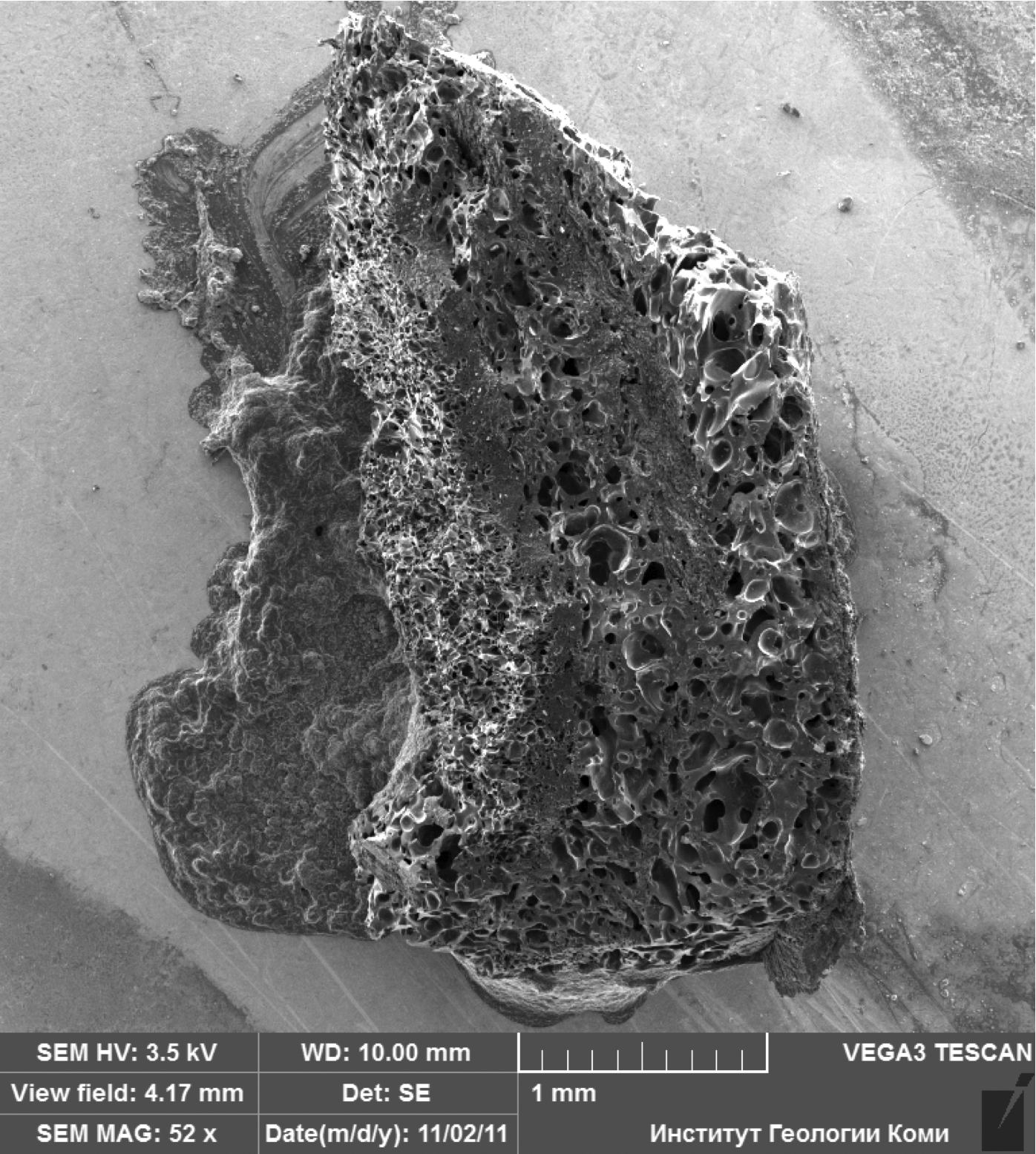
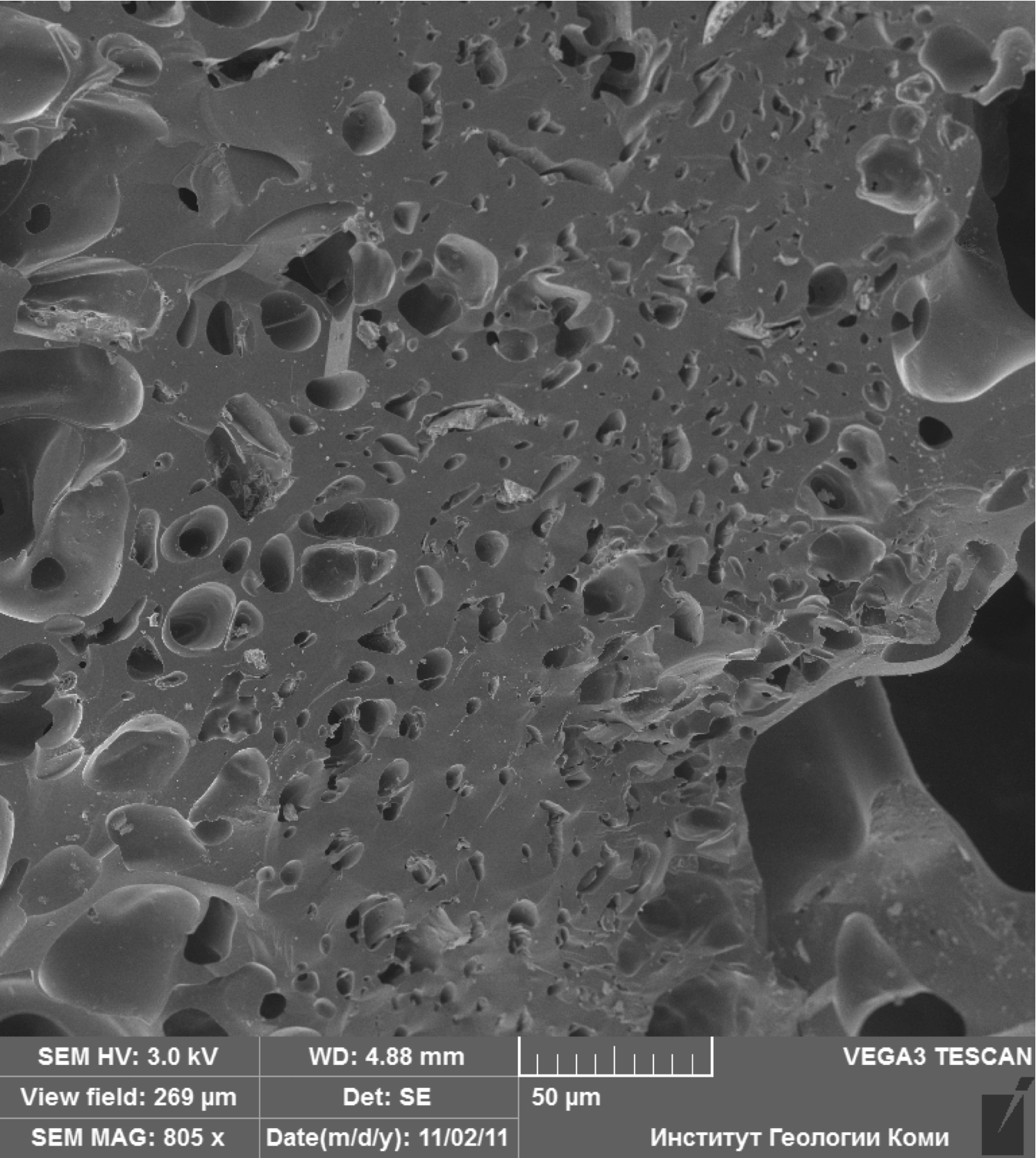
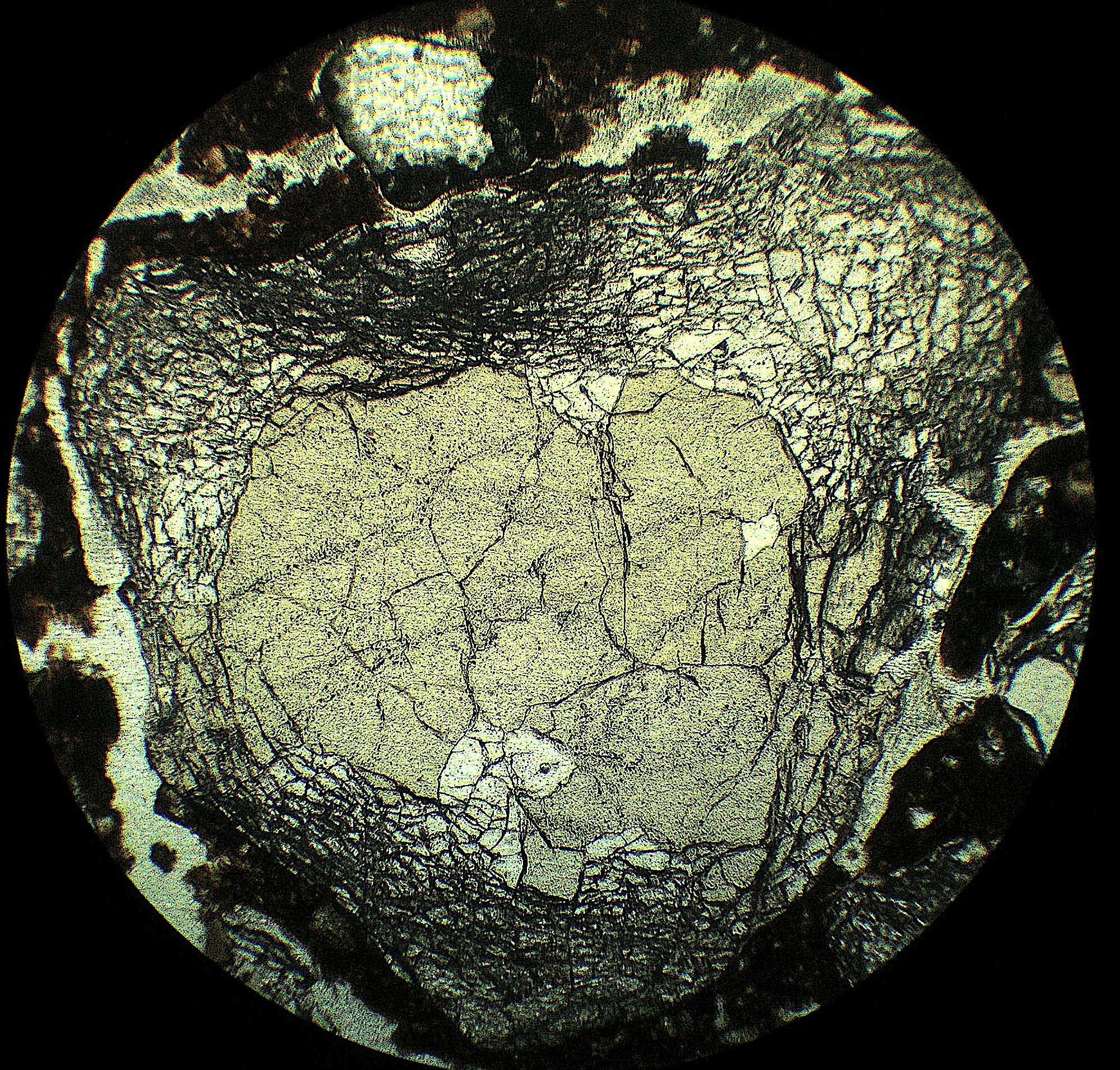
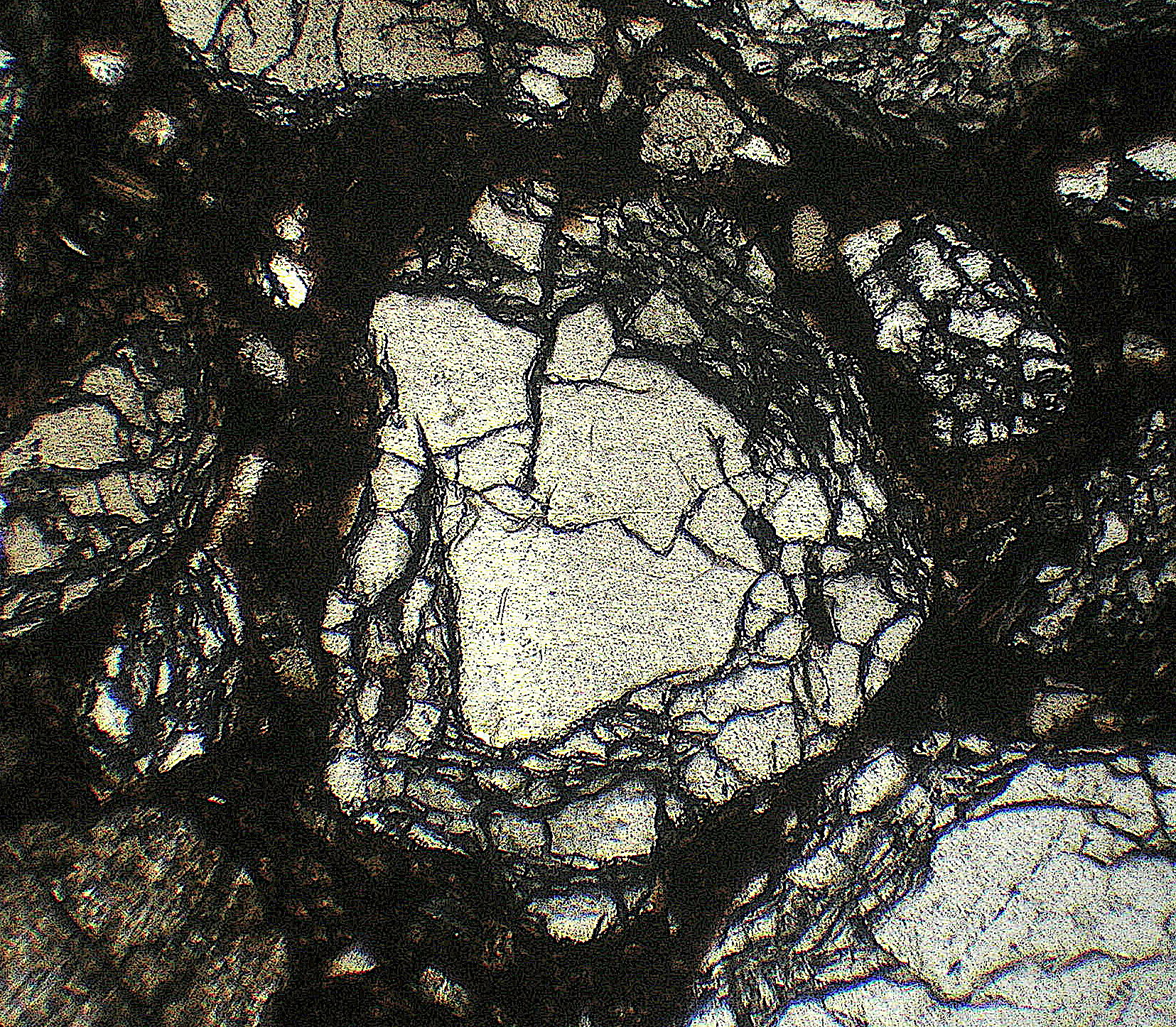
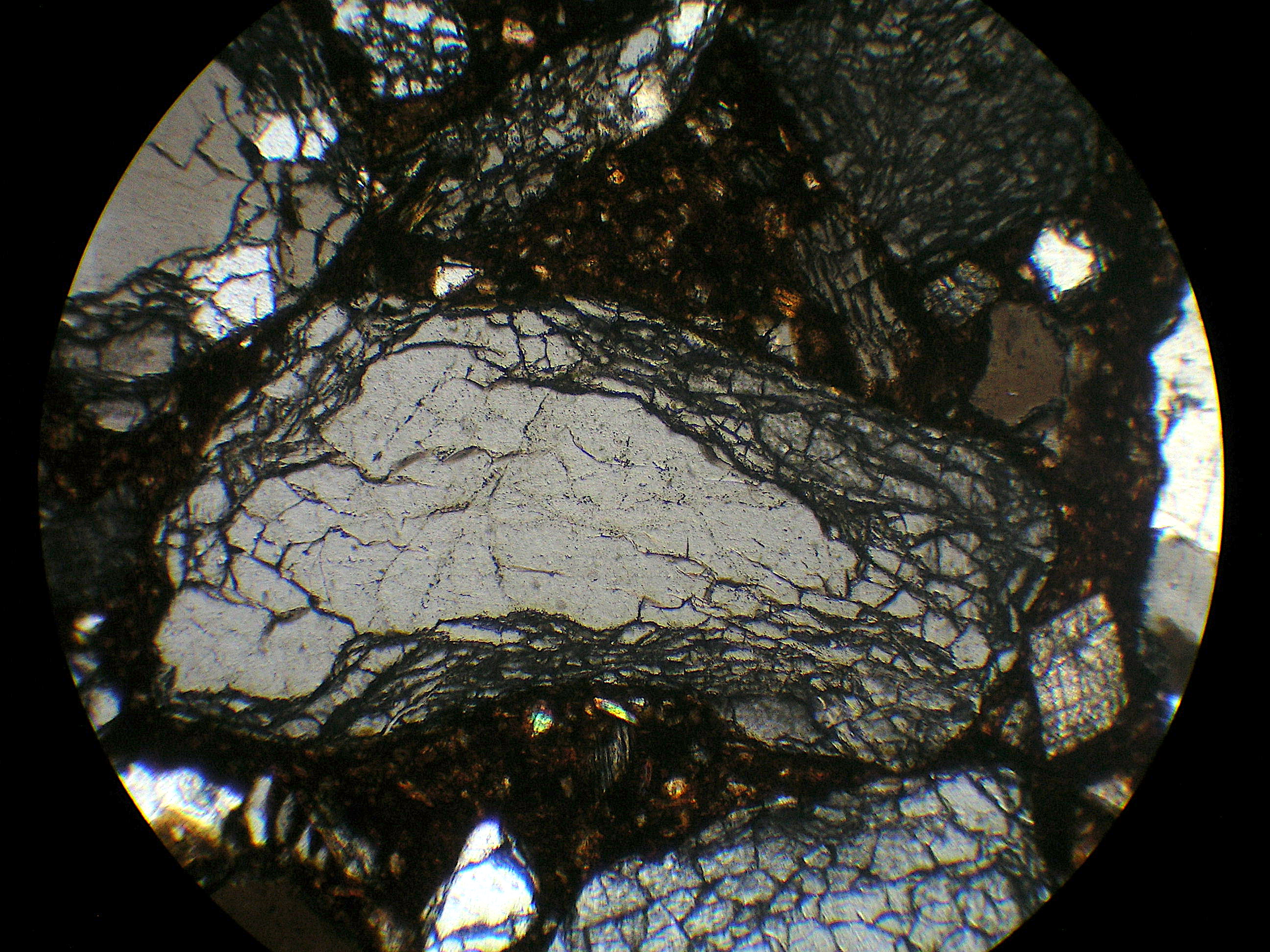
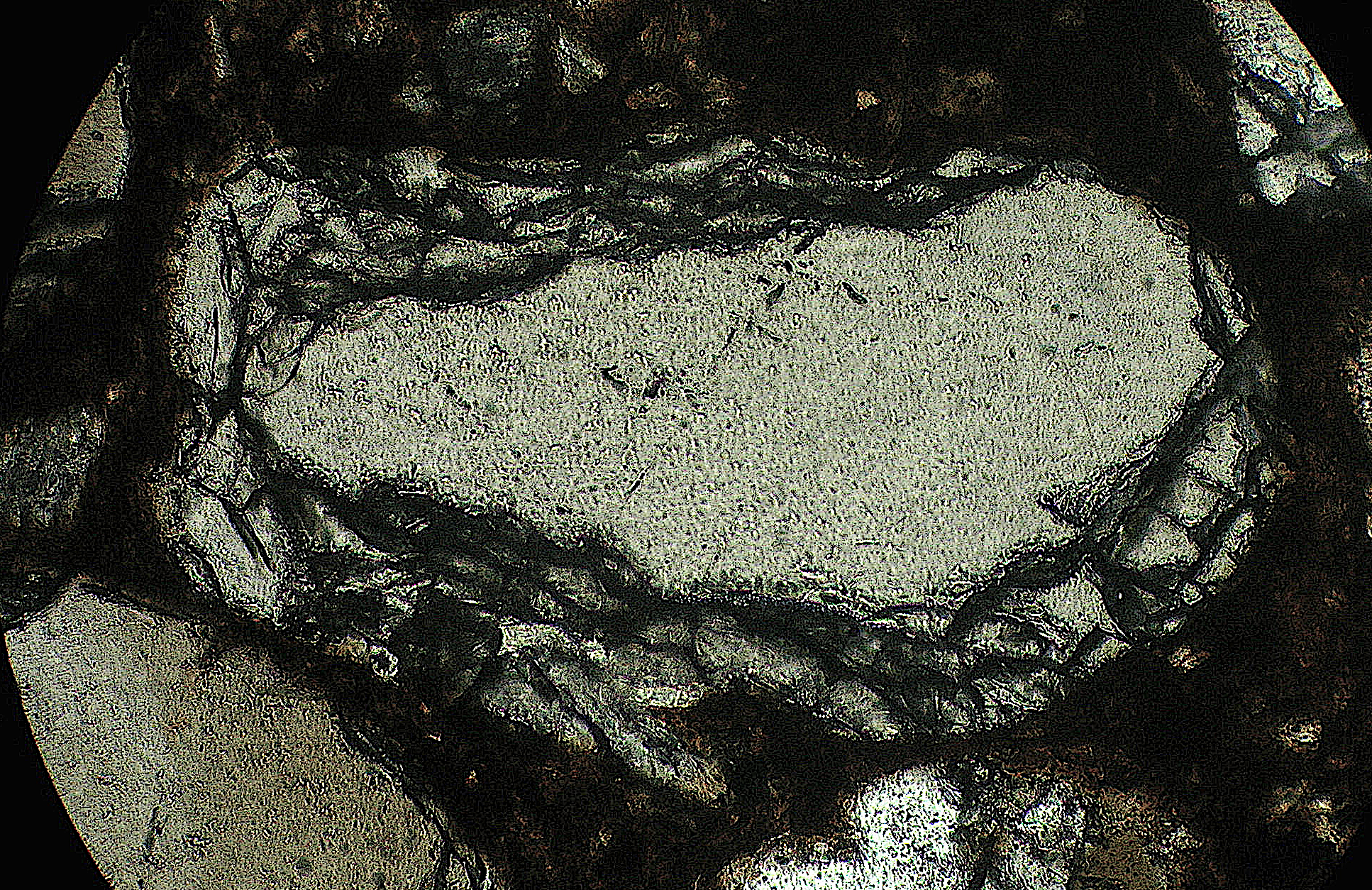
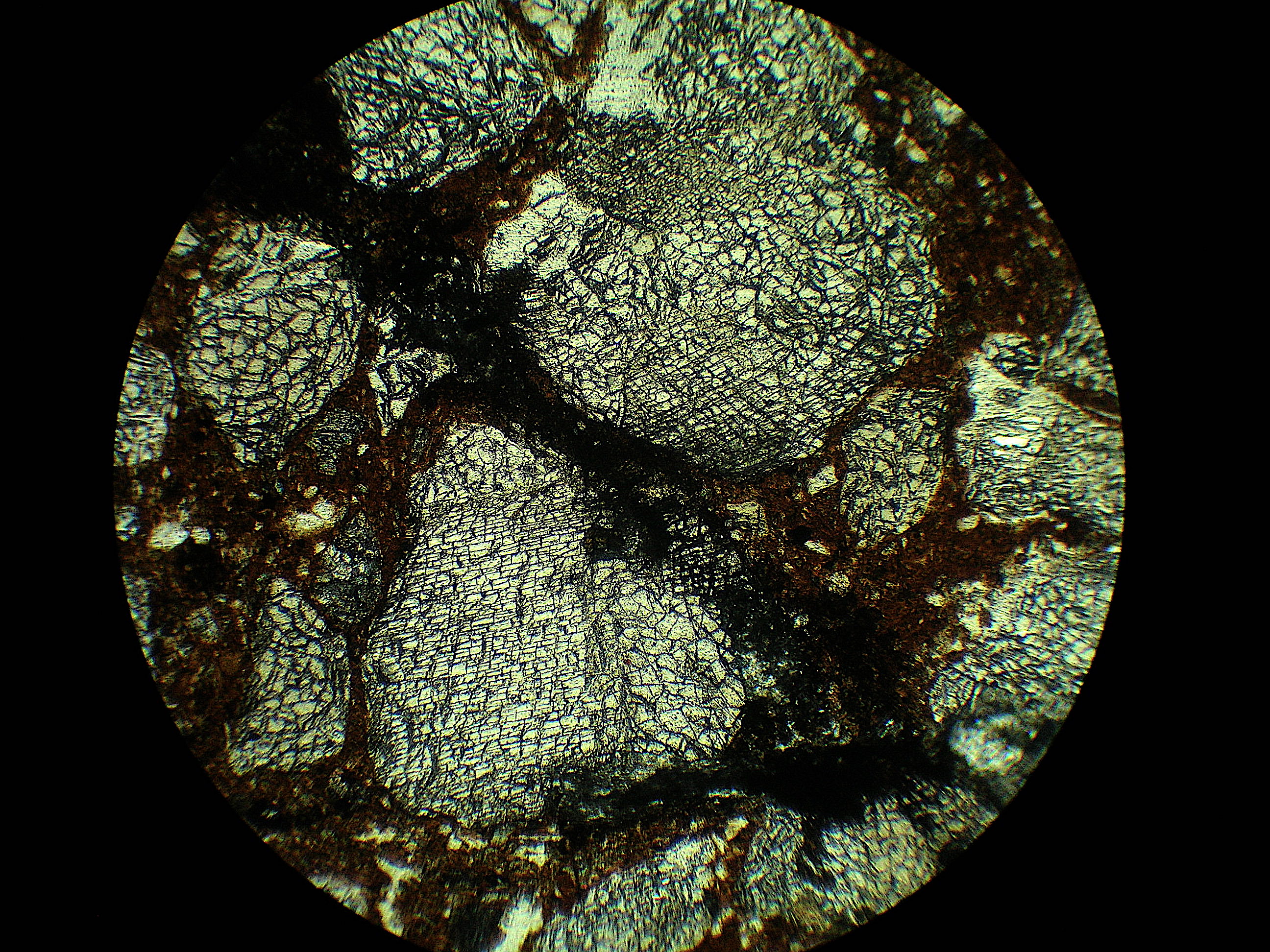
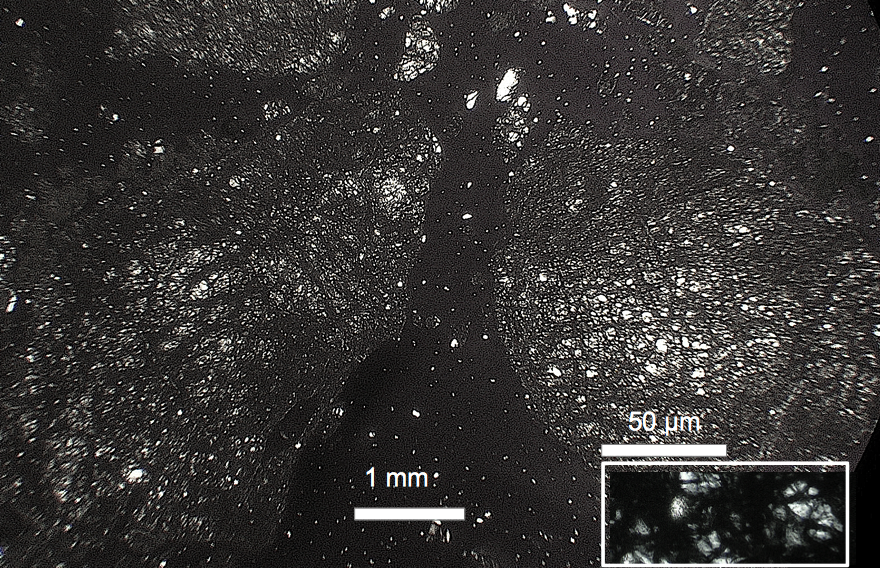
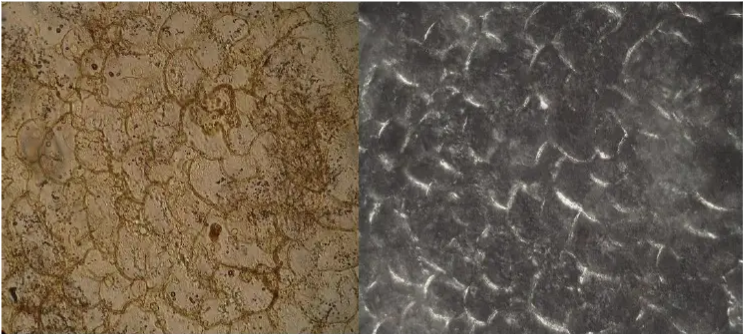
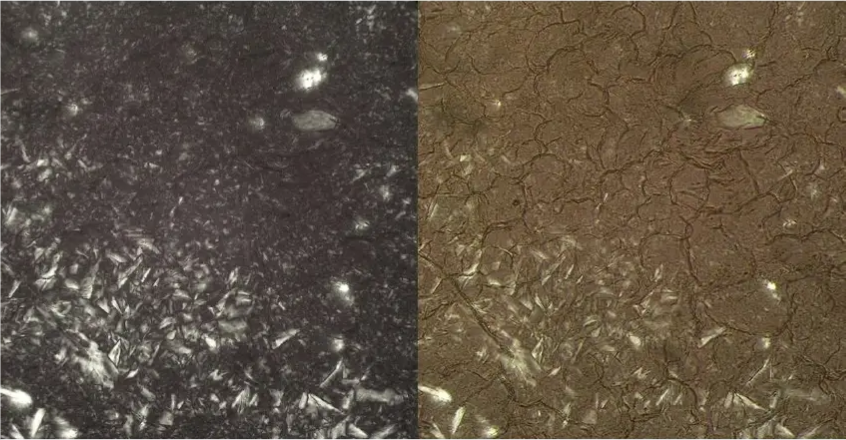 Ballen structures impact merging into tridymite and cristobalite.(photomicrographs, crossed polarizers and plane light; field width 1.4 mm). – Saarland (Nalbach, Saarlouis) impact.
Ballen structures impact merging into tridymite and cristobalite.(photomicrographs, crossed polarizers and plane light; field width 1.4 mm). – Saarland (Nalbach, Saarlouis) impact.
